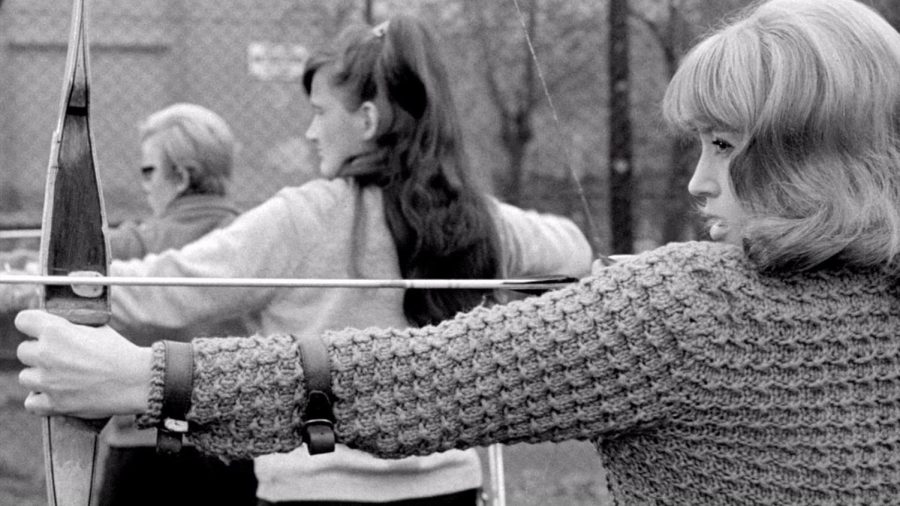Review: ‘The Girl’ is a landmark of feminist filmmaking
The debut film by trailblazer Márta Mészáros is an insightful examination of the repression of women in Hungary in the 1960s. The film played as part of Film at Lincoln Center’s retrospective of the famed Hungarian feminist filmmaker.
Márta Mészáros’ film “The Girl” examines the repression of women in 1960s Hungary. The film is considered a groundbreaking work of feminist cinema. (Image courtesy of Janus Films)
February 4, 2022
This past month, Film at Lincoln Center held a retrospective of Márta Mészáros, a greatly underappreciated filmmaker, who was a vanguard female director in Hungary. After making documentaries for a little over a decade, Mészáros made her first feature film, “The Girl,” which sparked a decades-long career of filmmaking notable for its feminist and socialist themes.
“The Girl” follows orphan Szőnyi Erzsi (Kati Kovács) as she sets out in search of her mother. Through Szőnyi’s journey, Mészáros explores the ways in which women are oppressed in society across generations.
The most frequent motif representing this theme of oppression is the 16-year-old boy who follows Szőnyi throughout the film. In his first appearance, he follows Szőnyi for a moment as she is leaving home for her journey. When asked why he is following her, he claims no particular reason, which is evidently false. Later, he follows her on a bridge. She tells him to jump off, so he does. The authorities then approach Szőnyi to punish the boy for jumping into the water, and she pays off his fine. Finally, he shows up to watch her at a party in the final scene. His stalking is emblematic of how a new generation of men in Hungarian society kept a watchful eye over the activities of women.

Szőnyi paying the boy’s fine is one of several examples Mészáros uses to emphasize the routine costs that women have to pay for their own subjugation. Szőnyi also pays for drinks with her friends, and later for a meal with a man who could potentially be her father. Perhaps this is also a feminist choice on Mészáros’ end, having the woman pay instead of the man, as he would under the patriarchial norm. Or maybe this emphasis on money is an intentional commentary on the similarly oppressive and brutal forces of capitalism.
The contrast between control of women of newer and older generations is also highlighted. At one outdoor party, a group of older women is sitting in a line; they are all dressed in similar clothing and postured neatly, almost like a row of chess pieces. This aesthetic presentation is another visual representation of the stifling patriarchal oppression these women have faced. The tableau is contrasted by the younger women out on the dance floor, seemingly free, though almost all are accompanied by a man to dance with. They can move, but are still monitored.
Most emblematic of the film’s themes is, perhaps, the scene near the beginning when, after leaving the home for girls, Szőnyi joins a family in the village where she plans to conduct her investigation. After eating, the father and his young son go into the other room to watch a beauty contest. Szőnyi joins them, followed by the older son, who is near her age, and the mother of the house. As everyone is gathered around the TV, Szőnyi begins to get up, but the father tells her to remain seated. In this moment, multiple generations join to watch a contest in which women show themselves off to male onlookers, seemingly the best form of self-expression they may have. Maybe Mészáros sees herself in Szőnyi at that moment where she’s forced to watch images crafted by men for men, when she’s been trying for so long and is finally successful in creating images by women for women. “The Girl” is a transgressive victory within this visual pattern of patriarchal oppression, and in revealing these social behaviors on-screen, Mészáros found her own path of feminist autonomy off-screen.
Contact Sebastian Zufelt at [email protected].
























































































































































